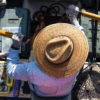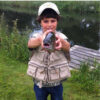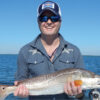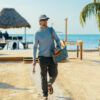I had no idea what to expect from my horseback riding vacation in Turkey, although I had heard this was one of the best and fastest rides you can do worldwide. So, it was with some trepidation and excitement that I boarded our overnight flight to Istanbul and then Kayseri, which is situated in the central region of the country.
After a 50-minute transfer by shuttle bus we arrived in Urgup to the first of many towns carved out of rock. The hotel consisted of cave-like rooms decorated with typical Anatolian carpets and decor. Immediately, I imagined myself as a modern-day Aladdin character. I perused antique shops offering lamps and various knick-knacks complete with vendors selling dried fruit, warm roasted and salted apricot kernels, as well as Turkish delight, which tastes unlike anything I’ve had before.
Our group for the week’s riding included eight riders who are mostly from the United States. All regular travelers like me, our ages ranged from 18 to 61 years old—and all of us had a sense of adventure.
We spent our first day recovering from jet lag and sightseeing, which left us ready to meet our hosts at Kapadokya Ranch and their 20-plus horses. The ranch offers horse riding trails through the heart of Cappadocia, a region famous for its distinctive rock formations, historical heritage and scenic hot-air balloon trips. Located in Central Anatolia, this exotic land attracts crowds of tourists from all over the world.
Kapadokya Ranch was impressive and so was its owner. Originally from France, Nicolas Guillo has lived in Turkey for 20 years with his wife Helene. Aside from French, he is fluent in English and Turkish. He taught himself to ride leaving Afghanistan after making a film there and discovered that the quickest way to do so was by taking a two-week journey by horseback over perilous mountains to Pakistan.
“I expect you to ride your horses correctly—and as instructed,” Guillo said. “The trails I will take you on are for fit, active and autonomous riders.”
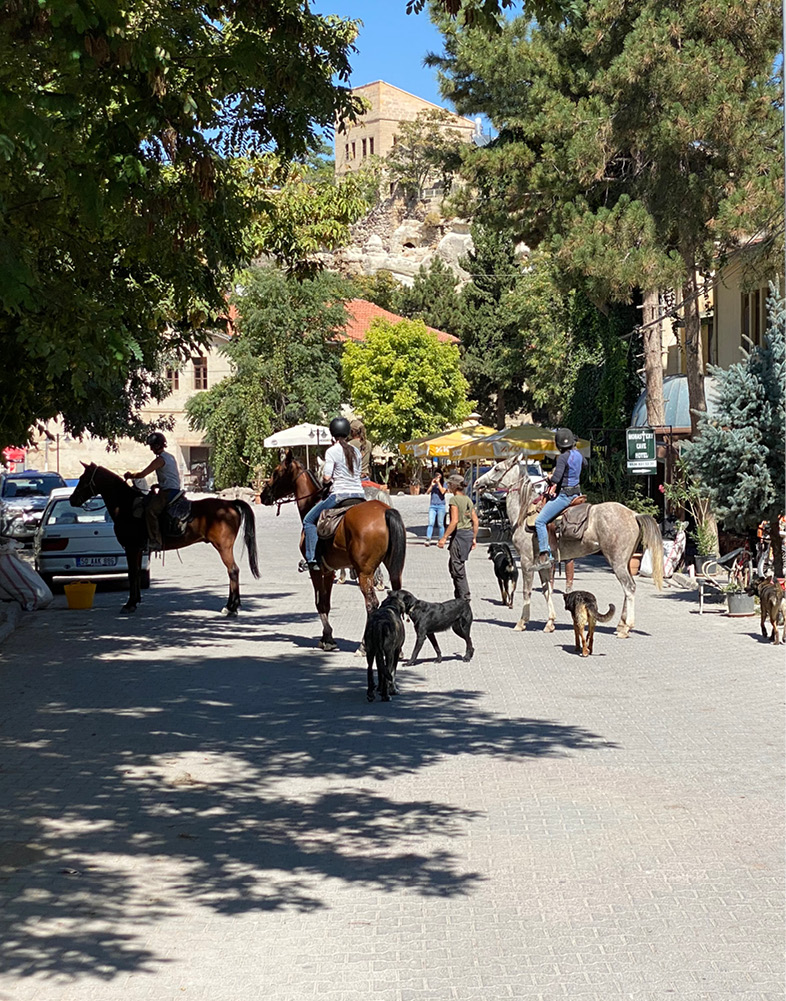
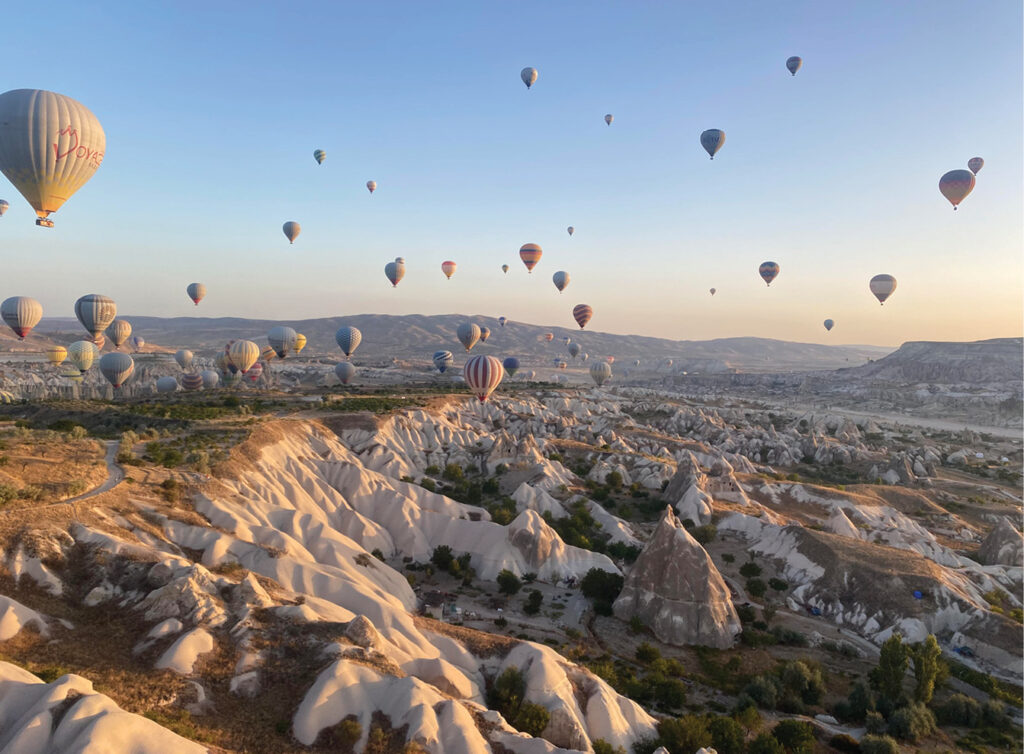
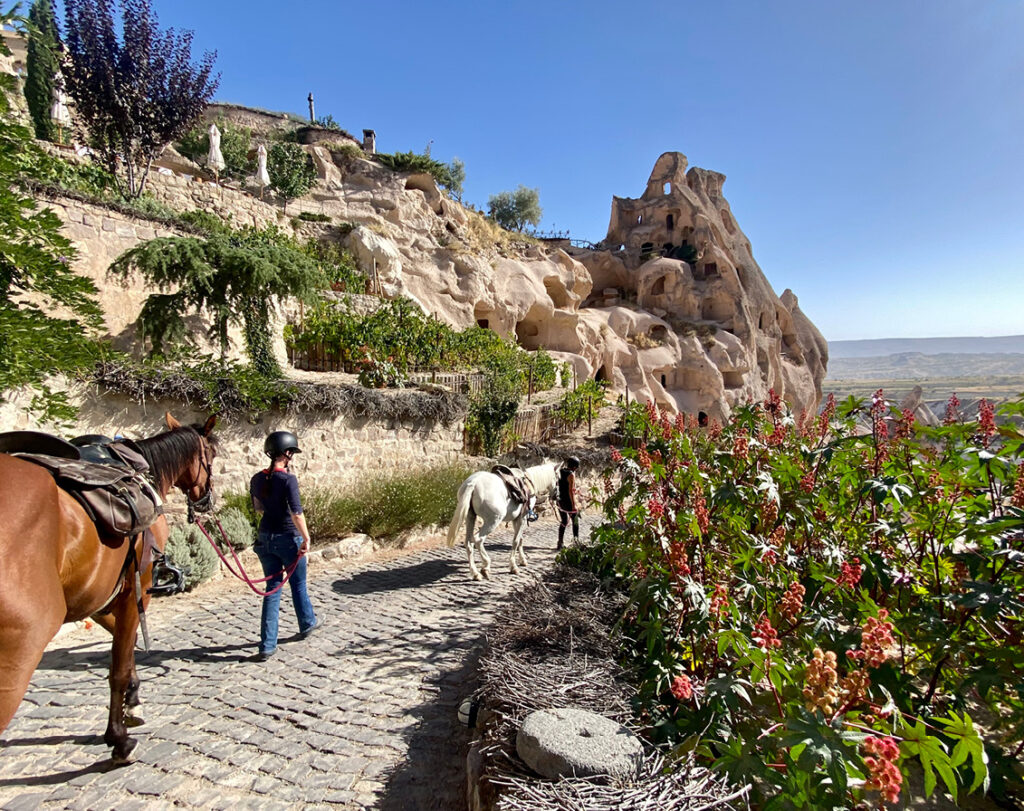
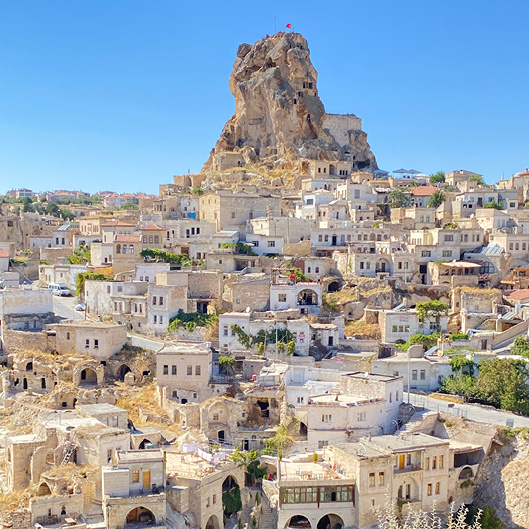
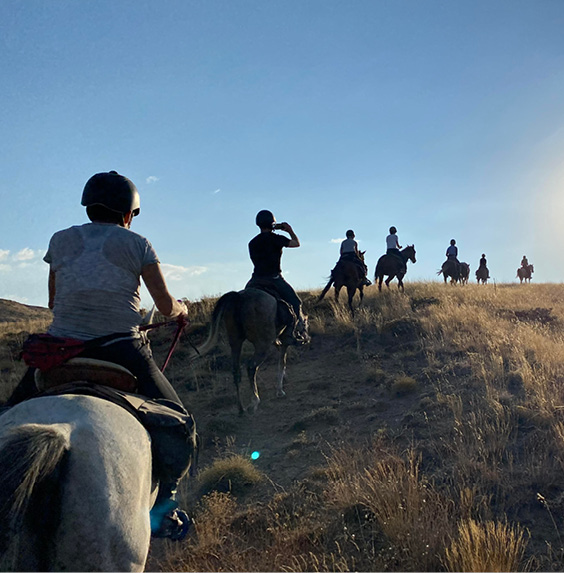
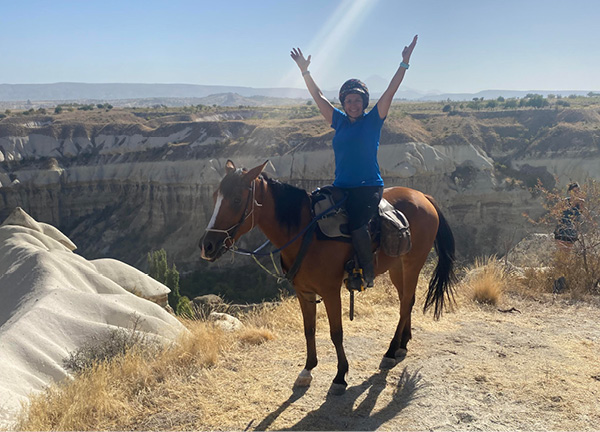
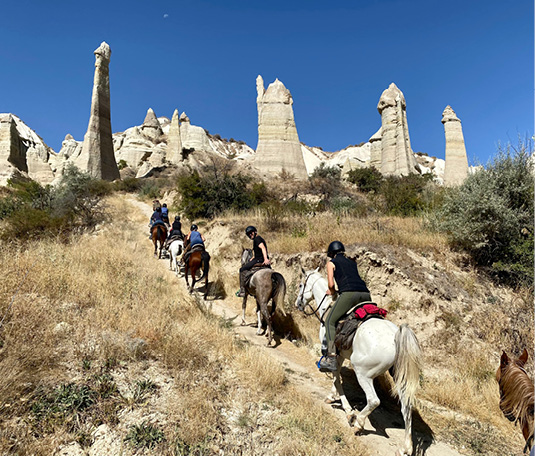
He gave us a tour and we were impressed by the horses, which are pure-bred Arabs with a few Arab-crosses to accommodate bigger riders. The tack room was particularly spectacular, featuring a tree carved into the roof of the cave. Guillo’s remarkable animals were fit, sure-footed and ready to hit the trail every morning, even while averaging 20 grueling miles a day. They were fed mostly chaff and barley, plus flakes of alfalfa. I’ve read about Arabian horses in literature and watching Guillo’s horses reminded me of the creatures in print, eating the wind and being somehow more powerful than mere horses.
On our first day at the ranch, our host showed us how to tack up with hand-made McClellan-type saddles fashioned by Guillo himself, which are designed to distribute the weight over the horses’ backs so they can carry humans long distances. Then, we were asked to take the horses on a test ride—one kilometer around the farm. This included riding through ditches and along banks, halting with immobility for 10 seconds, crossing a bridge and brief cantering.
Outfitted and well-matched with our respective horses, we set off for our first long ride to a hotel approximately 20 miles away. We whooped with delight on our first canter as we spread out across an open field on our way up to a plateau offering a stunning view of the valley. This type of riding reminded me of field hunting when I was younger back in the United Kingdom. We had to negotiate little drops, banks and tight winding paths. Our route included slippery rocks and steep drop-offs. We combined fast-winding canters on tracks with open gallops over stubble fields and grassy plateaus. We also encountered several steep rocky sections where we had to dismount and lead our horses, which was challenging. Guillo provided daily footage he shot using a GoPro, and the film summed up our day’s ride for our pre-dinner enjoyment.
We rode through tucked-away valleys famous for fairy chimneys and mystical rock formations. They were created more than 60 million years ago by wind, water and ice erosion from soft layers of lava and ash from three volcanoes, the largest being Mount Erciyes at 3,900 meters. The soft rock was perfect for human settlements beginning in Paleolithic times. Houses and churches carved into the rocks and valleys were among the most important centers for Christianity in later periods. Today, while many of the churches’ frescoes are damaged, you can still see enough to get a good idea of what they once looked like.
I was also fascinated by troglodyte dwellings, and some of my favorite rides included visits to the underground villages of Golgoli and Kirkule. Some of the cave dwellings are eight-stories-deep and most have emergency tunnels to safe rooms often equipped with a round stone people rolled shut for protection. Local people in the area were still used the caves to farm pigeons up until the 1960s, when chemical fertilizer and gun powder eliminated the need for pigeon guano.
Cappadocia is one of the natural wonders of the world. While there are many tourists who flock to the area, we felt privileged to ride on roads less travelled. On horseback, you can reach places that are not accessible to average tourists.
Our days began with a hearty breakfast that included olives, honey, local fresh fruit and gozleme, which are Turkish pancakes filled with mince, spinach or cheese. Lunches were varied, and occasionally we picnicked under a tarp and enjoyed tea in a samovar. sometimes a picnic, complete with a tarp for shade and tea in a served from a samovar. We also enjoyed traditional meals that included lentil soup, salad and stew, followed by baklava.
During our rides, we also observed local farming. People grow grapes on the ground instead of on trellises; the sun is too strong in summer, and the grapes become too sweet in the heat. The sun is useful for drying fruits, and farmers here do dry plums, grapes, apricots and pits in the sun, on rooftops and out in the fields.
Anatolian dogs roam freely and guard farms. Our procession of horses seemed to elicit smiles and waves from the locals who believe in the nomadic lifestyle. No one minded when we picked apples and plums from the trees along the way.
In the evening we reached our hotels, ready for warm hospitality and great fare. We stayed in four different hotels during our journey, and my favorite was Kilim Pension in Uchisar, which offers an amazing view of Pigeon Valley. Each morning at that hotel we enjoyed watching hot air balloons carrying passengers above the town of Goreme. One morning we woke up at the crack of dawn to join the hundreds-strong balloon brigade and float over Cappadocia.
“The only danger we face is another balloon ripping the fabric of our balloon,” our pilot said. “But don’t worry—that’s my job.”
I flinched at his words but took them to heart and soaked up Cappadocia from our perch in a bluebird sky. What an experience. By the end of the week, we felt much more confident riding as a group. Independently yet together, we covered amazing terrain that challenges even the most accomplished riders. Cappadocia is aptly named the “land of beautiful horses,” and I couldn’t agree more.
Louise Carelsen has lived in Switzerland, Germany and the United Kingdom. She spent a year at France’s National Riding School at Saumur and received her degree in riding and teaching. Together with her husband Cor, she travelled and worked abroad before settling in Botswana at Limpopo Horse Safaris, which they owned and operated for nearly 14 years. Today she lives in Charlottesville, Va., where she rides racehorses and show horses.







